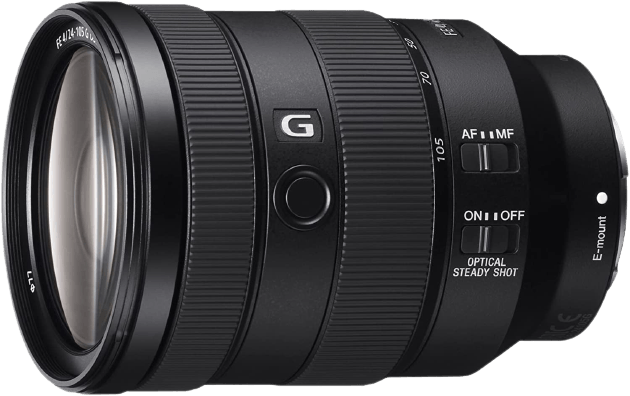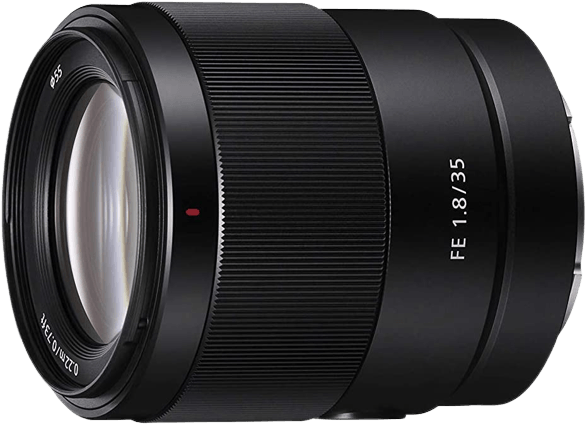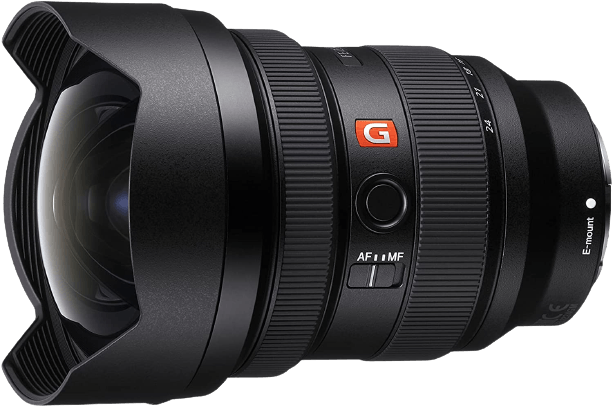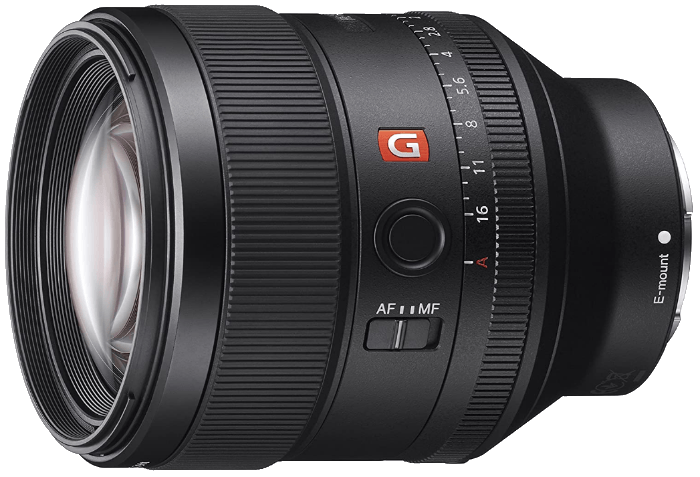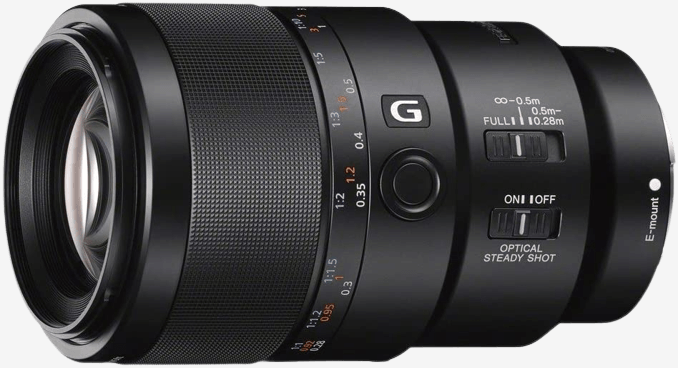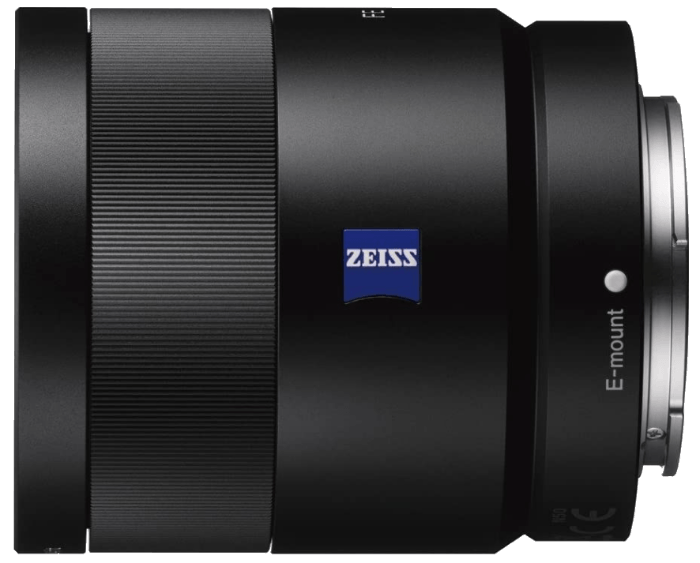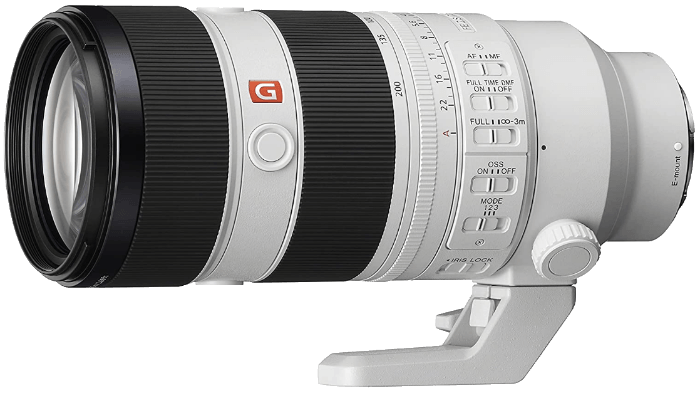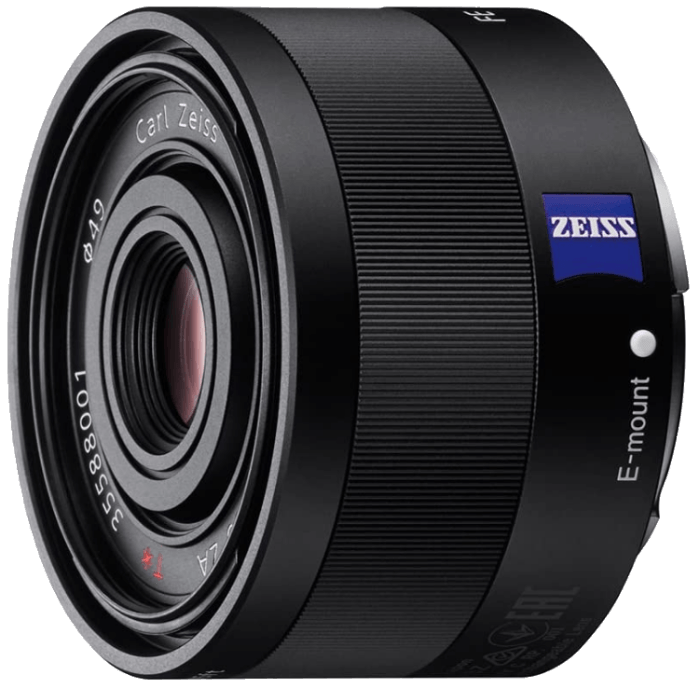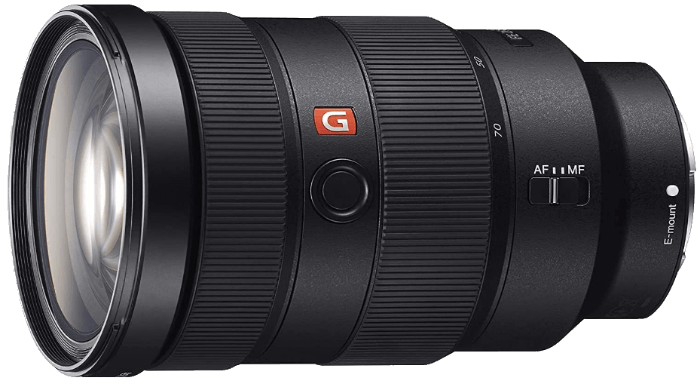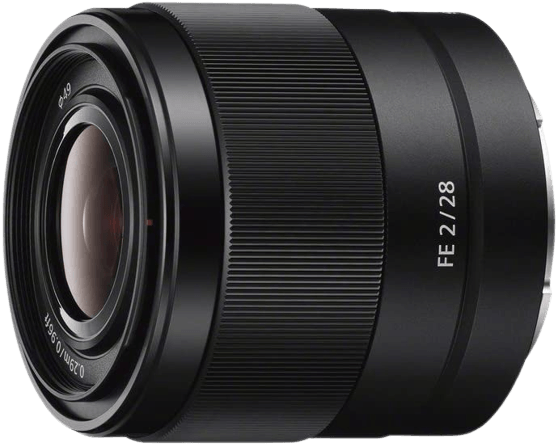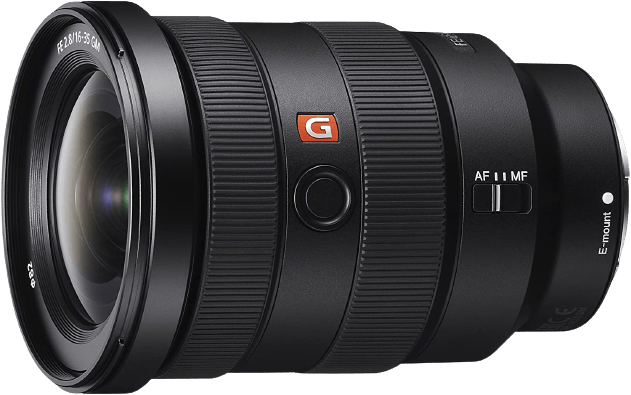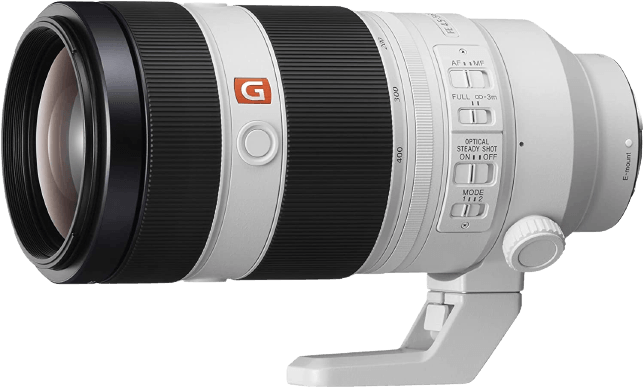But what about their lenses? They may be as well known as Nikon and Canon in the lens department. But their FE lenses are truly excellent. The series has a high standard of build quality and image creation. After considering several factors, the Sony FE 24-105mm f/4 ED G OSS comes out on top! This is thanks to its compact size, accurate autofocus, and incredible results. [Note: ExpertPhotography is supported by readers. Product links on ExpertPhotography are referral links. If you use one of these and buy something, we make a little money. Need more info? See how it all works here.]
12 Best Sony FE Lenses
Here’s a quick look at our top choices. We’ve chosen a range of prime and zoom lenses at various price points. If you want to know what the Sony FE lens range is, go to the end of this article.
12 Best Sony FE Lenses in Detail
Now we take a look at the best Sony FE lenses in detail so you can make an educated decision when buying your next FE lens. Remember, it’s impossible to define one lens as the absolute best. It depends on what you want to shoot. All of Sony’s lenses are of excellent quality. But we’ll help you navigate the jargon to make the right decision. You can read our article on Sony lens abbreviations if needed. For our top pick, we’re going with the best all-around lens. It’s a standard zoom lens with a wide range of shooting options. If you were only allowed to leave the house with one lens, this is the lens you’d want to have. It’s a zoom lens with a focal length range of 24 to 105mm, giving you a lot to play with. It’s a powerful zoom, so you can get those shots that are usually out of reach. It also gives you a minimum focusing distance of 38 cm. It’s not a macro lens, but that’s still close up. The lens is comprised of seven glass elements. Four are aspherical, and three are extra-low dispersion elements. The elements are made with precision engineering, giving you corner-to-corner resolution. The quality of the glass elements means minimal chromatic aberration throughout the zoom range. The image quality is pristine and clear no matter what you’re shooting. The manual focusing ring is responsive and smooth. And the autofocus system is excellent, using Sony’s unique Direct Drive Supersonic wave Motor (DDSSM) system. It’s fast, quiet, and precise. The minimum aperture is f/22, while the max aperture is f/4. It gives you enough to play with, allowing for varying depths of field and bokeh effects. But it might struggle in darker situations. The Sony FE 24-105mm f/4 ED G OSS is a go-to lens for many photographers. You can switch from street photography to portraits without having to change lenses. It’s a top-quality and versatile piece of equipment. People often see 35mm prime lenses as limited or job-specific. But the Sony FE 35mm f/1.8 is a recent release. And it’s turning out to be a must-have prime lens. With its f/1.8 large aperture, this Sony EF prime lens is turning heads. The lens quality is excellent. The special aspherical glass element ensures superb optical performance with no distortion or aberration. But it’s the nine-blade aperture that sets this lens apart. This unique design allows for a wider max aperture. A 35mm lens is great for everyday shooting out in the street. But the f/1.8 aperture opens this lens up to new styles and techniques. Not only does it allow you to shoot in low-light situations. It also gives you a beautiful and soft bokeh effect. The autofocus is fast and precise. And it’s powered by a linear motor that makes very little noise. The focus hold button is a handy feature. It allows you to fix the focus position if you must recompose the scene. One of the most striking things about this FE lens is how compact it is. It’s 6.5 cm wide and 7.3 cm long. And the whole thing weighs only 280 grams. Sony has kept things tight. But they made no compromises in build quality. The Sony FE 12-24mm f/2.8 ED G is an ultra-wide-angle zoom lens. It gives an extraordinary wide-angle view, making it highly desirable to photographers in many areas. Focal lengths aren’t much more wide-angle than 12mm. And when set to its widest setting, you can create some dynamic perspectives. You can emphasize distances and showcase expansive spaces. This lens has a constant f/2.8 max aperture. It’s great for working in low light, so you don’t have to compromise with shutter speed or ISO. The lens’s exterior has a basic design but hides a highly sophisticated lens system. Within the lens lies three extreme aspherical elements, with another aspherical element for extra clarity. From 12mm to 24mm, this lens delivers superb image quality. The autofocus system is impressive, even by Sony standards. The AF is driven by four linear motors, making it fast and accurate. It also has tracking abilities, so you don’t lose sharpness when shooting moving subjects. The Sony FE 12-24mm f/2.8 ED G-series lens isn’t cheap. But if you can afford it, you won’t regret it. It’s a sublime piece of equipment. The FE 85mm f/1.4 SSM ED GM is a Sony E-mount lens specifically crafted for portrait photography. If you’re a portrait photographer looking for a portrait lens to pair with your Sony mirrorless camera, this could be the one for you. This G Master lens has an aperture range from f/1.4 to f/16. It gives you flexibility in the studio or on location. The lens has a constant f/1.4 max aperture that helps you maintain great exposure. And it allows you to achieve an excellent bokeh effect. The circular aperture system enhances the blurred bokeh effect. It uses 11 blades that maintain a circular gap through which the light can pass. This gives backgrounds and light sources a softer blur than many other lenses. Optical quality is never in question with this lens. It combines extra-low dispersion (ED) and super ED glass elements. Even at the edges of your shots, chromatic aberration is not something you’ll have to worry about. A supersonic wave motor powers the autofocus. That may sound complex, but all you need to know is that it’s fast and precise. And you can barely hear it. If you want to change to manual focus, you can flick the switch in one second. The Sony FE 85mm f/1.4 G Master lens is a portrait lens by classification. But we shouldn’t pigeonhole it too much. It’s a versatile piece of equipment that you can use for product, fashion, and fine art photography. The Sony FE 90mm f/2.8 is the G Master macro lens for all of Sony’s full frame cameras. It’s perfect for capturing precise and detailed subjects. The lens gets you close and gives you excellent image quality throughout its range. It has a bright f/2.8 max aperture, closing to an f/22. That’s an excellent range for a macro lens. It also has the circular blade system found in many Sony E-mount lenses. This system helps achieve superb bokeh and focusing effects. A Direct Drive SSM system drives the autofocus system. There are two “floating focus” lens groups, each powered by its own motor. And despite having two motors, you won’t hear a thing. The near-silent motor makes it perfect for insect photography. You also get a focus range limiter. It allows you to narrow down the search area of the autofocus. It can save time and makes the AF system even more precise. One of the main selling points of this FE lens is the optical stabilization system. Handheld macro photography is tricky, as the slightest camera shake can have a huge effect. But this system maintains excellent image quality even if you’re shooting by hand. This is the best macro lens for Sony E-mount full frame cameras. The build quality is superb, as you would expect from Sony. But the price isn’t out of this world. The FE 90mm G OSS is the lens you need for macro photography. The Sony FE 55mm f/1.8 is a high-quality Zeiss lens with a broad appeal among Sony full frame camera users. It’s an excellent choice for street and travel photography. And the 55mm focal length gives an alternative look to a 35mm. It gives you a narrower field of view. You get an excellent aperture range of f/1.8 to f/22. You won’t need to change lenses or push your ISO when conditions change. The aperture system uses nine blades that maintain a circular aperture. The bokeh effect is not often associated with this type of prime lens. But you can achieve a beautiful, blurred effect when the aperture is wide open. The Sony lens aperture blade system makes this possible. That said, these types of effects aren’t this lens’s specialty. You might experience some light rings toward the edges if you push it too far in this direction. But for an everyday lens for Sony mirrorless cameras, it’s fantastic. The size is slightly large for a prime lens. And this might put off some street photographers who like to keep a low profile. But for image quality and versatility, it’s of the highest order. The price of a telephoto lens can often put people off. But for specific fields of photography, it’s an essential piece of equipment. And if you’re a Sony user, the FE 70-200mm G Master lens is the best in the business. It’s a telephoto zoom lens with a focal length range of 70 to 200mm. This gives you a huge scope to work with. The glass elements are beautifully constructed, giving you pristine optimal quality. They have a Nano AR coating that prevents reflections and flare. The lens has a constant max aperture of f/2.8, which maintains exposure quality and depth of field control. The circular blade aperture system also helps create a fabulous bokeh effect. The autofocus system is terrific. But Sony’s optical SteadyShot image stabilization takes this lens to a new level of precision. The stabilizer keeps everything sharp… whether you’re experiencing camera shake or shooting a subject that won’t hold sharp. Telephotos are perfect for wildlife and sports photography. But the Sony FE 70-200mm makes it ideal for portraits and telephoto macro photography. The dust- and moisture-resistant build means you can take it out into the field. This Sony FE telephoto lens isn’t cheap, so it’s not something to buy on a whim. But if you’re a professional with a Sony mirrorless camera, you can consider this an investment. The Sony FE 70-200mm G Master won’t disappoint you if you need a telephoto lens. The Sony FE 35mm f/2.8 is a pancake lens. It’s a prime lens, so it has no zoom capabilities. And it has a fixed 35mm focal length. It’s categorized as a pancake lens because it’s shorter than wide. It’s a compact prime lens that’s lightweight and easy to carry. This pancake lens is perfect for street photographers who like to stay discreet. But despite its small size, it’s a versatile piece of equipment. It gives you a wide aperture range, with a max opening of f/2.8. This goes down to f/22, giving you lots of room to maneuver. This pancake lens gives you a wonderful wide angle as well. This Sony E-mount lens uses a Carl Zeiss T* coating for its optical elements. lt eliminates lens flare and ghosting, giving you superb resolution right to the edge of the shot. The lens uses the circular aperture system on many of Sony’s FE lenses. And it’s dust- and moisture-resistant, meaning you can take it out shooting even when conditions aren’t perfect. The Sony FE 35mm pancake lens is a nifty piece of kit. It’s pocket-sized and lightweight. But there is no compromise in quality. It’s a perfect lens for photographers who don’t want to draw too much attention. The Sony FE 24-70mm G Master lens is a versatile zoom lens. It’s made for precision photography for any of Sony’s high-resolution full frame cameras. It doesn’t have the biggest zoom range. But the 24 to 70mm range gives you a lot to work with. And the image quality is excellent throughout that range. The quality of the glass is never in doubt with Sony FE lenses. But this zoom lens uses an extreme aspherical element in combination with the other extra-low density elements. It gives you precision with no aberration. And the nano AR coating also helps to prevent any distortion. The lens gives you an excellent constant max aperture of f/2.8, with the range reaching f/22 at the other end. That’s impressive for a zoom lens with such a large focal range. It gives you fantastic low-light control. You have a direct drive SSM motor for the autofocus system. It works smoothly with very little noise. And it works well for video as well as stills. The Focus Hold mode is another great benefit when using this lens. The Sony FE 24-70mm G Master is a zoom lens of the highest quality. It isn’t cheap, as you are paying for an excellent zoom lens. But it’s versatile and holds up with precision image capture. The Sony FE 28mm f/2 ED is a handy little prime lens. It’s compact and light, and the image quality is excellent. It has become an “everyday” lens for many Sony photographers. It works well with all the Sony E-mount cameras. But it partners particularly well with the Sony a7 series. It has a fixed focal length of 28mm, meaning there’s no zoom. But that’s perfect for street photography. And the weight of only 200 grams makes it ideal for travel photography too. The glass element quality is not in question. And the lens uses the circular aperture system that is starting to set Sony lenses apart from the competition. The apertures range from f/2 to f/22. So you have great creative control. Sony lenses aren’t usually known for their low prices. That is in part due to their build and performance. This prime lens has build quality associated with Sony lenses… but you won’t have to break the bank to buy one! The Sony FE 16-35mm G Master is a wide-angle zoom lens at the top of its field. It’s perfect for landscape and real-estate photography. And you can even use it for astrophotography with impressive results. The aperture range is excellent to work with. The max aperture is f/2.8, and the minimum is f/22. That’s plenty of space to work with. And shooting close-ups with the f/2.8 will give you a beautiful bokeh effect. Again, we see the Sony circular aperture system, but this time with 11 blades. This gives your soft-focus effects smoother edges without losing color. And along with the usual extra-low density glass elements, this lens has two extreme aspherical pieces. So distortion is rarely a concern. You get a solid autofocus system. And a focus hold button is another bonus. But one problem is the weight. It’s a big piece of gear you’ll feel in your arms if you shoot handheld. But despite the heft, the Sony FE 16-35mm f/2.8 GM lens is one of the best wide-angle zoom lenses on the market. Perhaps not quite as good as the FE 12-24mm f/2.8 ED G, but it’s up there. Unfortunately, quality like this doesn’t come cheap. This could be the lens for you f you need a heavy-duty telephoto lens for a Sony E-mount camera. The Sony FE 100-400mm f/4.5-5.6 G Master lens gives you tremendous telescopic power with your Sony camera. The focal length range starts at 100mm and goes up to 400mm. That changes the scope of your photography. You can capture animals at a distance without disturbing them. And you take sports shots from outside the arena. As with all the other lenses on this list, this lens has excellent glass quality. And there’s the circular blade aperture. But Sony’s optical SteadyShot stabilization system makes their telephoto lenses stand out. It ensures sharp and crisp images even when shooting handheld. The lens has two supersonic wave motors to power the autofocus system. It’s precise and reliable, even when shooting sports or animals on the move. You can switch to manual focus in the blink of an eye. And another great feature is the focus hold button. A telephoto lens like this one is an investment. It isn’t cheap. But if you need a telephoto lens that has power and precision, the Sony FE 100-400mm f/4.5-5.6 G Master lens could be the one for you.
What is the Sony FE Lens Series?
Sony FE lenses are compatible with Sony E-mount mirrorless cameras. There is a series of E lenses, which are made for Sony’s APS-C crop sensor cameras. But the FE series is specific to their full frame camera range. The Sony full frame cameras are those from the A7 and A9 ranges. And they are some of the most powerful mirrorless cameras on the market. You can use all Sony FE lenses with any Sony FE-mount camera. There’s an excellent array to choose from if you’re a Sony shooter. You can use Sony E-mount lenses on FE-mount cameras. But the image will be cropped due to the different sensor sizes. The camera automatically switches to ASP-C mode. FE lenses are also compatible with Sony ASP-C cameras, such as the a6000 series. But they will have 1.5x the focal length and max aperture multiplication. There is a great deal of flexibility when it comes to Sony FE lenses. You can swap one lens for another. And you have a wide range of lenses to choose from. There’s everything from prime and zoom lenses to macro and telephoto lenses.
Conclusion
Sony is now making some of the best lenses for full frame cameras. If you’re a Sony E-mount camera user, lens quality isn’t something you’ll have to worry about. At least not if you stick to the Sony brand. But there is a price tag to this standard of the lens. Of course, it depends on what you need. A prime lens is cheaper than a telephoto lens. But there is an excellent array of Sony FE lenses to choose from. I hope this list has pointed you in the right direction to select the best Sony FE lens. If you want a guaranteed show-stopper of a lens and a great all-rounder, get the Sony FE 24-105mm f/4.0 ED G OSS zoom lens.
